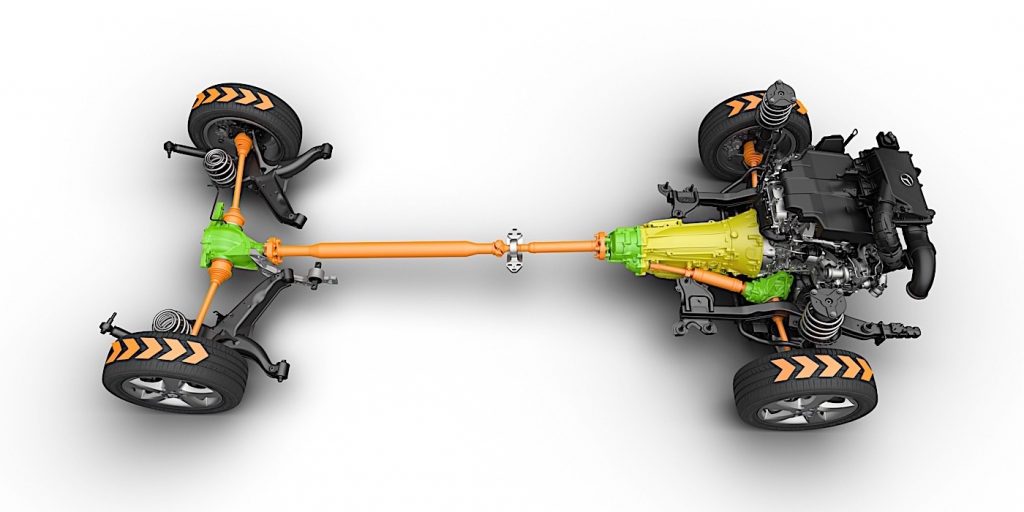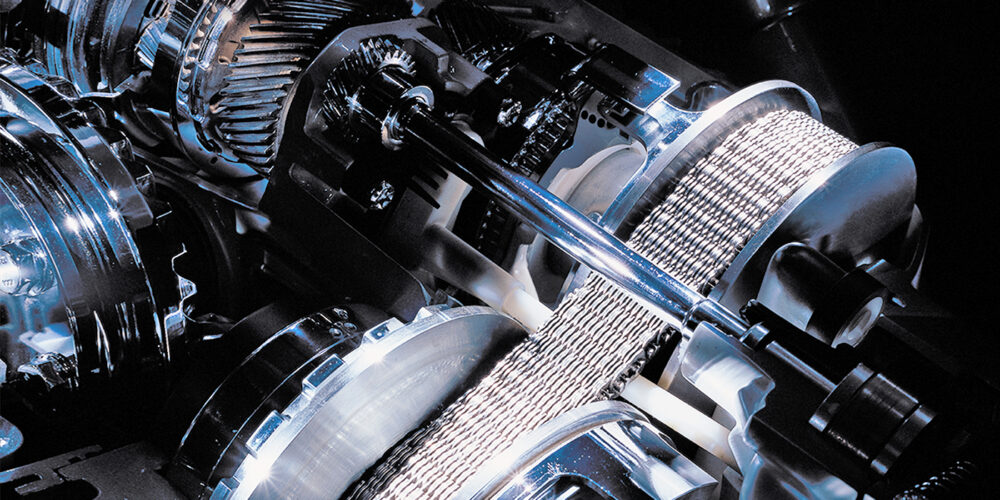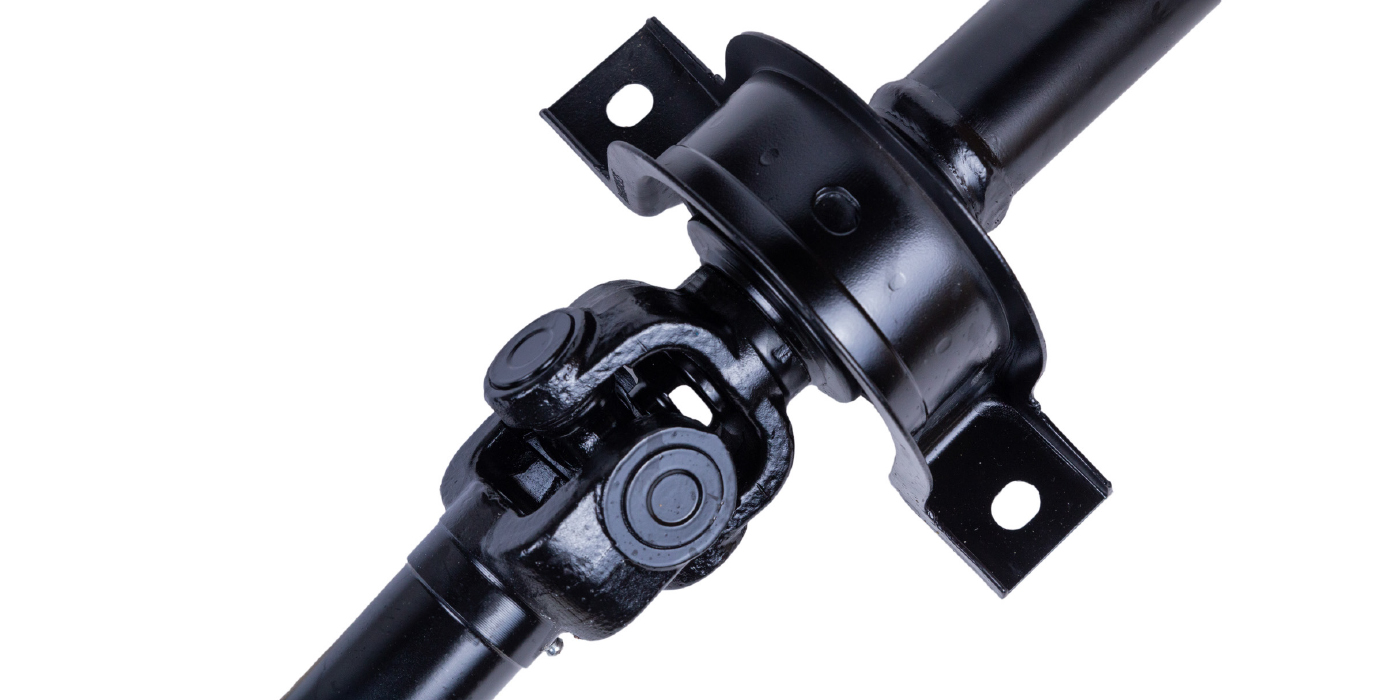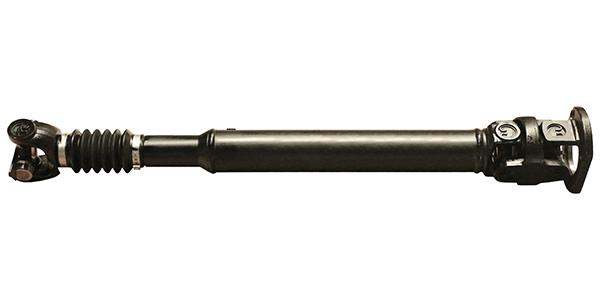Driveshaft problems can be spotted from the moment you put the vehicle in gear to pull it into a bay. As the power is transmitted from the transmission to the rear axle, the slack from worn or damaged components is taken up, resulting in a sudden crunch or pop.
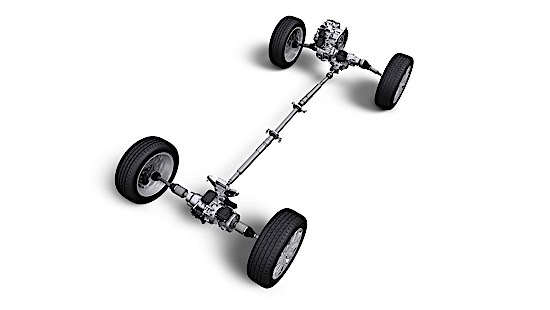
Once the vehicle is moving, you might hear a whine coming from the center of the vehicle. The noise will change as speed increases and might change as power is applied. If the vehicle is put into neutral while moving, the sound remains the same as the driveshaft is still spinning.
The problem could be the driveshaft center bearing. These are used if the driveline has a two-piece driveshaft. The center bearing is a ball bearing mounted in a rubber isolator that attaches to a frame cross-member.
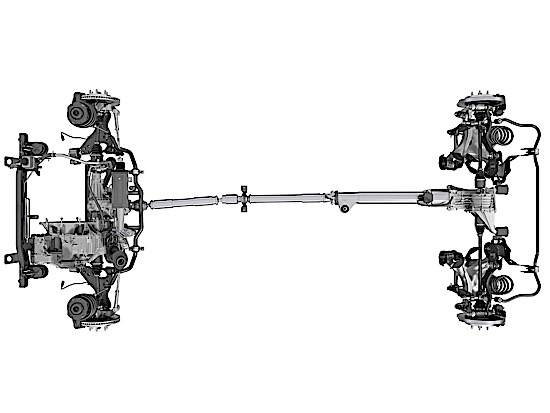
A driveshaft center bearing can fail due to the bearing and the rubber isolator. The isolator aids the alignment process and allows vertical motion at the driveline and helps isolate the vehicle from vibration. The bearing in most center bearings is sealed for life. Some do have a zerk fitting from the factory, and some replacement units also have a way to lubricate the bearing.
Premature failure of the center bearing could be the result of too much driveshaft angle, the water shield damaged or missing, road salt, moisture, or damaged rubber isolator. Also, high mileage and bearing wear can contribute to failure.
A small amount of noise is normal when using 4WD on a low-traction surface such as snow, ice, mud or sand. When operated in 4WD on a high-traction surface, such as clear pavement, the noise generated may be much more significant. This noise is the result of “driveline loading,” which can naturally occur in 4WD.
As a vehicle travels down the road, the tires rotate a certain number of times per mile depending on the tire circumference. If all the tires are not exactly the same circumference, they will turn at different rates. On these trucks, 4WD is a “part-time” system designed for use only on low-traction surfaces.
This system has no internal differential, so the front and rear propeller shafts will turn at the same speed. On low-traction surfaces, different tire sizes won’t have much effect, as one tire can easily slip on the road surface to match the speed of the other tires.
On a high-traction surface, it is much more difficult for one tire to slip. Therefore, the 4WD operates under a “blind” to heavy-load condition, and noise is the result.
As tire rolling rates are a major factor in this
condition, consider the following essential items:
• All tires should be the same size and brand (excluding the spare tire). Tires
of different brands may have different circumferences, even if they are the
same size;
• Check that tire pressure is equal in all four tires. A tire with low pressure
will roll at a different rate;
• All tires have approximately an equal amount of wear. Tires with varying
amounts of wear will roll at different rates; and
• Ensure that all tires are the same tread type. Don’t mix on- and off-road,
all-season or street tires on the same truck, as they may have different
circumferences and roll at different rates.
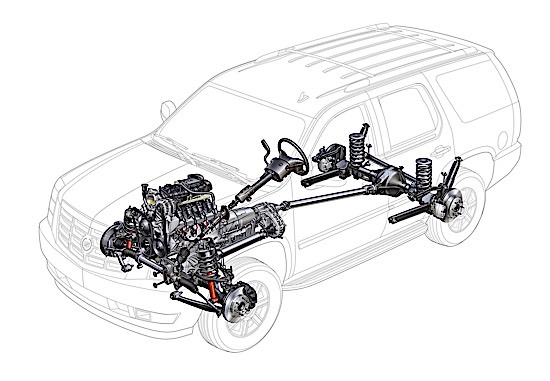
Driveline noises caused by loading in 4WD vehicles may be mistaken for transfer case or front axle noise because they can sound very similar. 4WD noise caused by loading may exhibit the following conditions:
• The noise will be greatest on a clear, dry road and decrease on a low-traction surface. Front axle or transfer case noise caused by bearing, ring, and pinion, or planetary gearing will be the same on all surfaces;
• The sound will increase while making a tight turn. Most front axle or transfer case noises won’t increase;
• The noise can be changed from a deceleration condition to acceleration (or acceleration to deceleration) by raising or lowering tire pressure at one end of the vehicle; or
• One or more of the tires may show small, short scratches around the circumference of the tire tread. These scratches are caused by the tire slipping, or “scuffing,” on the road surface.
This noise should be considered normal and attempting to repair it will not result in satisfactory reductions to driveline noise. Any attempts to correct this condition by repairing these components may cause the customer to believe that the vehicle is unreliable and will also result in an inconvenience while their vehicle is out of service.
Vibration or any sound coming from driveshaft may be a result of the following:
End Fittings (End Yoke, Flange Yoke and Companion Flange)
• Visually inspect input and output end fittings to make sure all nuts or bolts or bearing strap and bolts are still there with no gaps between any mating surfaces.
• Visually inspect the driveshaft dampener, if present, for any damage.
Driveshaft Tubing
• Visually inspect driveshaft tubing for any dents or missing balance weights.
Universal Joints
• Check universal joints for excessive looseness. Hold the inboard yoke and try to move tube yoke vertically and horizontally.
• Check if the universal joint has a grease fitting. Some joints are sealed and can’t be lubricated. If the last time the joint was lubricated can’t be determined, the universal joint might need replacement.
• Visually inspect snap rings to make sure they are all there and end yoke nibs if retained by a bearing strap.
Slip Member
• If inboard slip, check slip member for excessive radial looseness.
• If lubricated for life slip member, inspect boot for any damage.
• If the slip member can be lubricated, when was it last lubricated?
Center Bearing
• If the vehicle has a two-piece driveshaft, visually inspect the center bearing rubber cushion for damage.
• If it was pulled apart recently for service or replacement of components, make sure it was assembled with the same phasing it had when taken apart.
Driveshaft Angle
If the driveshaft angles have changed due to a misalignment of driveline components or changes in ride height, it changes the operating angle of the universal joints. If the differences in the operating angles are great enough, it can cause noise and even vibration. To calculate the operating angles of the universal joints, you can use this online calculator from Spicer.
Axle
Some drivetrain noises may be the fault of the differential. Some of the issues are related to the setup of the ring gear and pinion. If the bearing preloads in the differential are not set properly, excessive endplay and lash can occur. If a differential bearing cup or cone were not seated properly at the build, it could move under initial loading and open up the backlash value. Clunking in the driveline can occur when shifting from drive to reverse or reverse to drive.
In some cases, the quality of the ring and pinion set could cause noise and reduced life of the differential. The source of the noise is not due to the setup or build of the differential, but the interaction of the teeth surfaces on the gears. Quality manufacturers like Spicer use a surface finish on the ring and pinion that reduce noise and operating temperatures. The OE-quality finish can extend the life of the differential by three times compared to the competition.
If a vehicle is consistently overloaded, the bearings will start to fail. As the bearings fail, they allow too much play between the bearing cup and cone and cause noise due to the change in backlash and endplay. This is why it is critical to as the customer how they use their vehicle during the customer interview. With this information, you can select the correct parts for the axle and customer. There are complete axle and service parts available that can off-roaders climb taller boulders or a contractor carry more to the job site.
This article was sponsored by Spicer Driveline Solutions from Dana Aftermarket. For more information on Spicer drivetrain products, visit SpicerParts.com.

